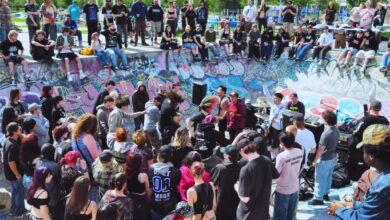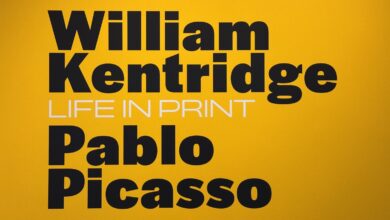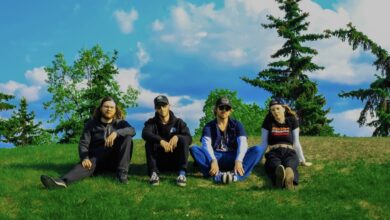Frozen faces: How statues bring the campus to life in the winter months
The statues of North Campus each provide a unique story about the university, and paying them a visit can brighten wintery walks between classes.
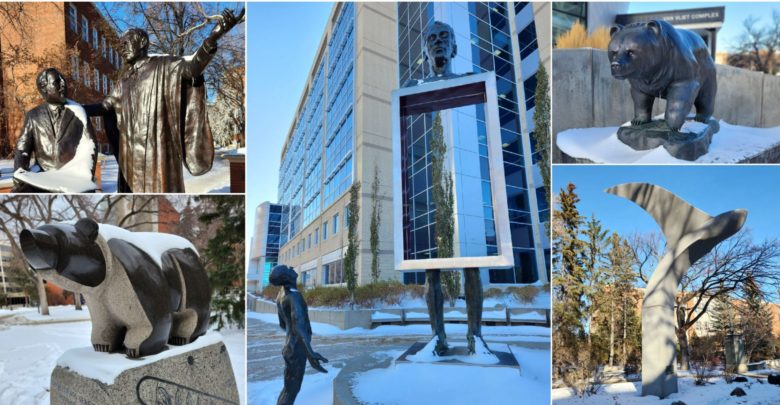 Annika Pries
Annika Pries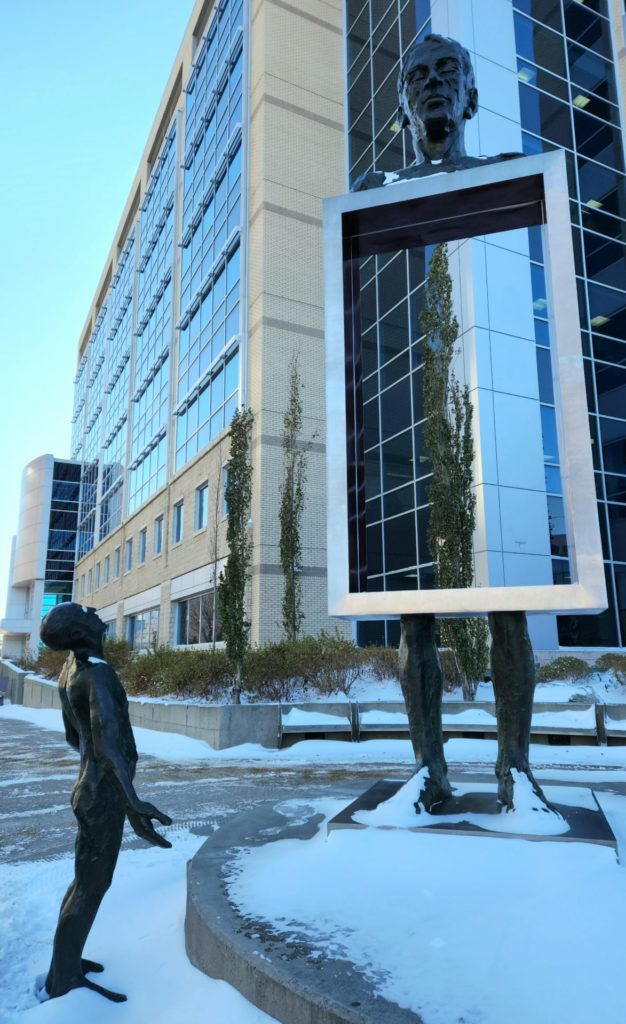
The summer greenery of campus is gone and if you’re like me, most of your time outside is spent between classes and the Rutherford Library (the coziest study spot). Despite this, the various statues on campus provide interesting insights into the university’s identity, and are worth a moment of our time, even in sub-zero temperatures.
It seems fitting to start with one of the largest statues on campus: the InScope statue near the Li Ka Shing building on 82 Ave. and 114 St.. Even if the name doesn’t sound familiar, the statue of a 22 foot tall man whose body, between shoulders and calves, is replaced by an open rectangle may still be an image well-known to those who spend their time at North Campus. Created by Dam de Nogales and unveiled in October of 2015, the statue draws in both its surroundings and the attention of passersby to promote imagination and learning.
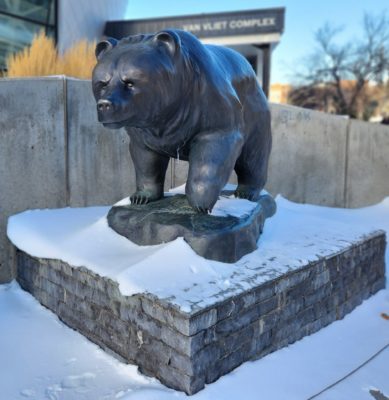
A few blocks over from InScope, you might spot the Alberta Bear statue shining in the sun outside the Van Vliet Centre. The bronze statue created by Cathryn Jenkins was revealed in March of 2015. A familiar symbol for students, staff, and alumni, the bear is undoubtedly a symbol of the university’s spirit and essence.
Represented here in its grizzly form, the Alberta Bear is also recognizable to all those who enjoy Alberta’s natural environment. Though perhaps a little out of the way for those of us arts students not involved in the sports and activity scene on campus, it is definitely worth stopping by, as it functions as both a university symbol and an ode to our provincial coinhabitants!
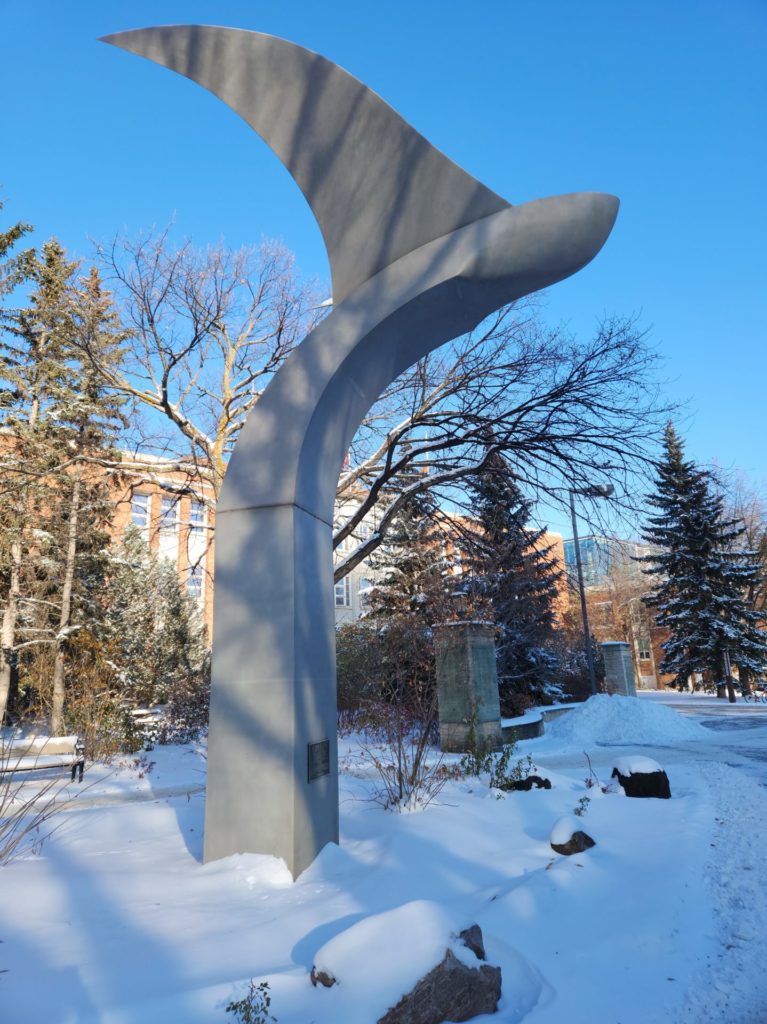
Perhaps less obvious than the bear, another symbol of campus spirit — and a piece of the university’s history — can be spotted outside the Students’ Union Building (SUB). Sometimes referred to as the Peace Dove or the Commonwealth Games Dove, the streamlined bird representation served as the flame tower when Edmonton became the first Canadian city to host the Universiade Summer Games in 1983. I’ll admit that I never granted the pillar-like figure a second glance before my search for statues, as its height and unusual shape make it easy to pass by. However, it offers an intriguing glimpse into an exciting period for the university and the city.
Another development of 2015, The Visionaries honours Alexander Rutherford, Alberta’s first premier, and Henry Marshall Tory, the first president of the U of A. According to its plaque, the statue was meant to help students develop an “appreciation of the university founders.” However, some view it as a tangible monument of colonialism and call the very “vision” of The Visionaries into question. The pitos-mamitoneyihtamowin (reimagine) UAlberta website describes The Visionaries as depicting Rutherford and Tory “plotting out their land stealing schemes.”
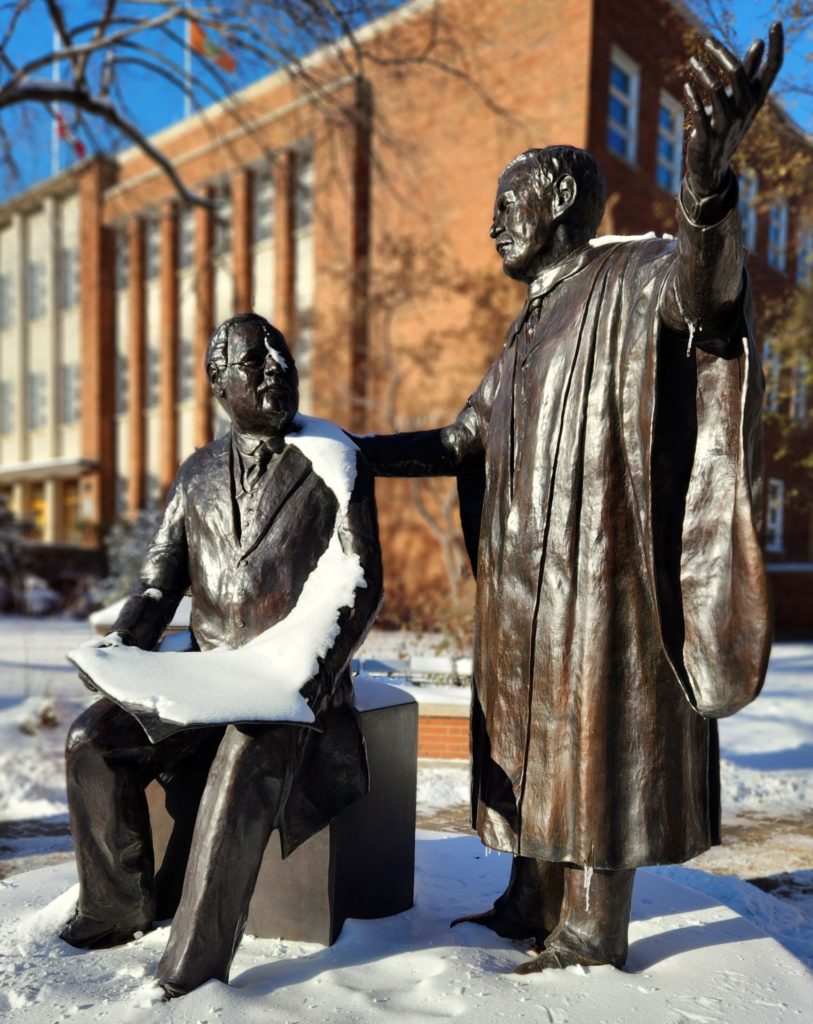
Before the reveal of The Visionaries, its respected sculptor, Barbara Paterson, expressed her hope that people would someday use the statue as a gathering place. This goal of hers has been met for me personally. I often use the sculpture as a meeting spot since it bridges the gap between some of the arts and sciences buildings on campus. As a physical connecting piece on campus, The Visionaries is doubtless a conversation starter when it comes to the university’s past and its present.
In summer of 2016, the university revealed sculptor Stewart Steinhauer’s Sweetgrass Bear in the Main Quad at the heart of North Campus. The sculptor hopes that, as a part of the university’s initiative toward Indigenous reconciliation, the bear will “help humans connect to the land on a spiritual level.”
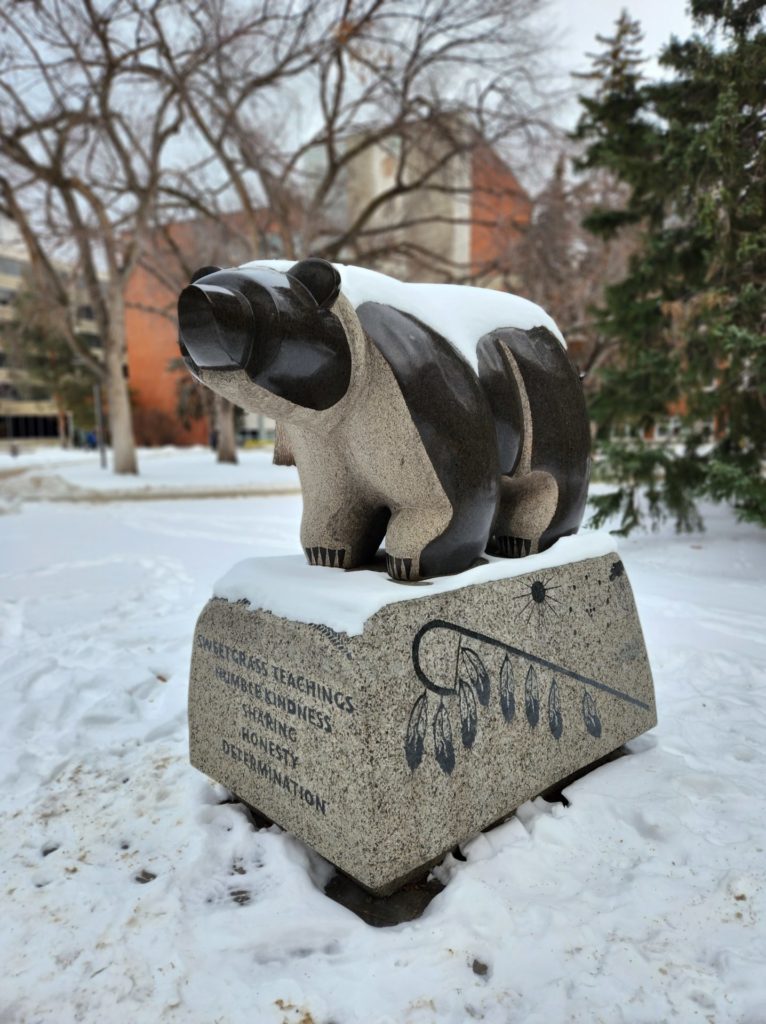
Steinhauer said on his website that the bear is a “spiritual being with a powerful teaching to share,” and some of these teachings are inscribed directly on the statue itself. Smoothly shaped, with a gently upward-turned face, the Sweetgrass Bear is welcoming, and I often feel invited to visit it on my way to class.
Whether you see a call for creativity in the towering InScope, or a gentle invitation in the smooth stone features of the Sweetgrass Bear, each statue has something to offer for those who move through the North Campus. I enjoyed discovering the frosty faces beneath the snow, and I suggest anyone willing to brave the cold to spare an extra glance at these campus monuments!

